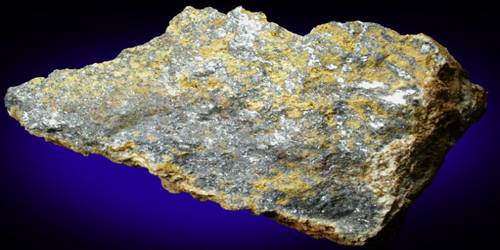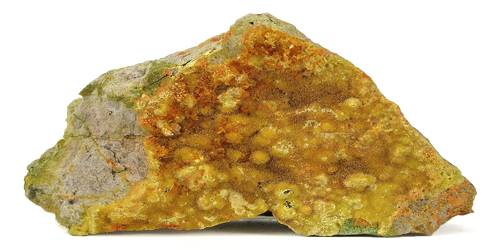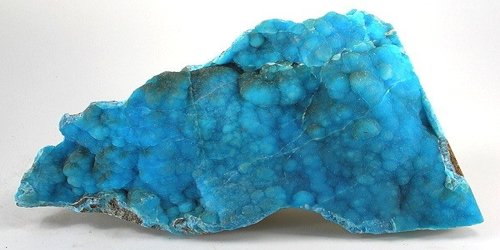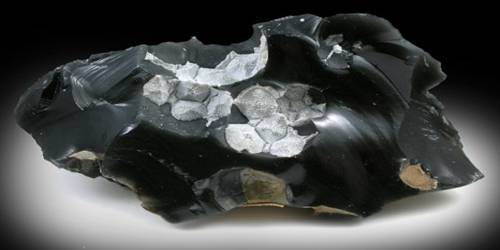Cervantite is an antimony oxide mineral with formula Sb3+Sb5+O4 (antimony tetroxide). It was named after the first possible place of its occurrence at Cervantes, Spain.
It was first described in 1850 for an occurrence in Cervantes, Sierra de Ancares, Lugo, Galicia, Spain, and named for the locality. The mineral was questioned and disapproved, but re-approved and verified in 1962 based on material from the Zajaca-Stolice district, Brasina, Serbia. It occurs as a secondary alteration product of antimony-bearing minerals, mainly stibnite.
General Information
- Category: Oxide mineral
- Formula: Sb3+Sb5+O4
- Crystal system: Orthorhombic
- Crystal class: Pyramidal (mm2) (same H-M symbol)
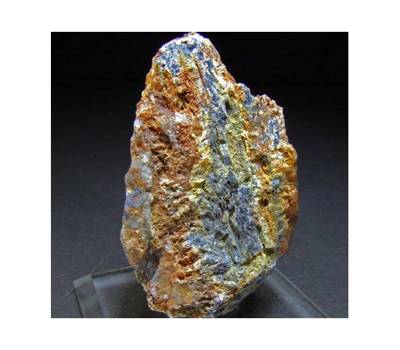
Properties
Cervantite can be identified in the field by its color variations, such as yellow, yellowish-orange, white, and cream. Its transparent to translucent form has {001} perfect cleavage. This mineral has a vitreous-pearly luster, with the light yellow streak. The fracture of this mineral is conchoidal.
The density of cervantite is 6.4 to 6.6 g/cm3, with a hardness of 4 to 5 – between fluorite and apatite.
- Color: Yellow to nearly white
- Crystal habit: Microscopic acicular crystals; massive
- Cleavage: Excellent on {001}, distinct on {100}
- Fracture: Conchoidal
- Mohs scale hardness: 4–5
- Luster: Greasy, pearly, earthy
- Streak: Pale yellow to white
- Diaphaneity: Semitransparent
- Specific gravity: 6.5
Occurrence
Cervantite occurs in a secondary mineral, formed from the oxidation of stibnite. It is often associated with minerals such as stibnite.
Information Source:
